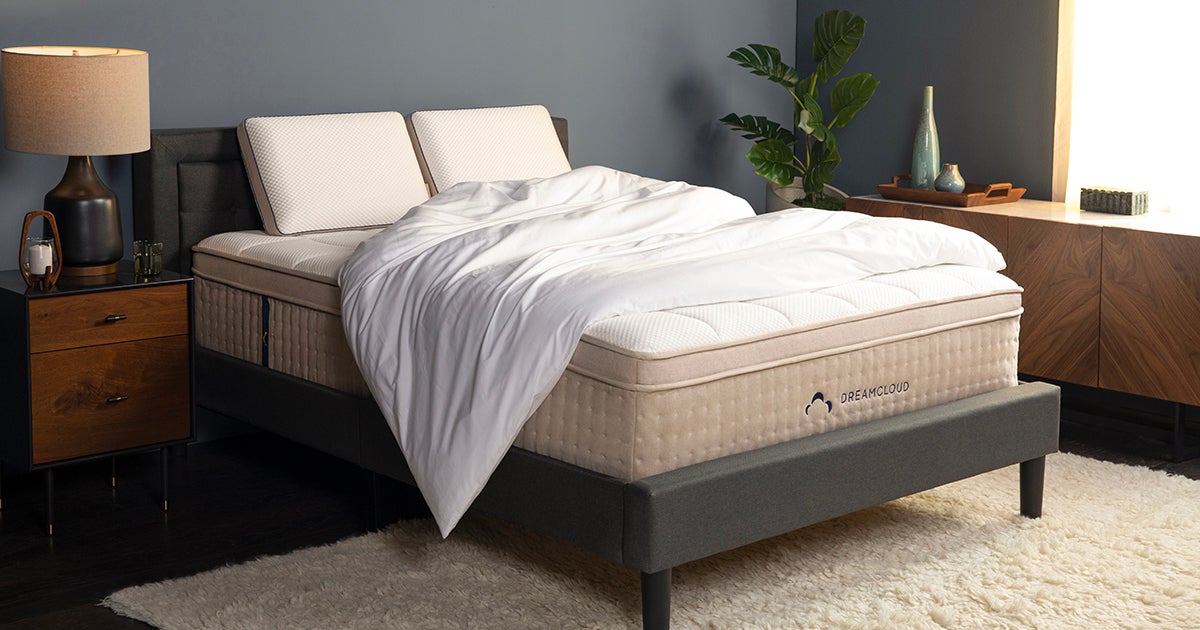SOFT-TO-THE-TOUCH COVER
Keep cozy and cool with quilted foam and cashmere on top.
PRESSURE-RELIEF COMFORT LAYER
Get relief wherever you need it with gel memory foam that contours to your shape.
SINK-IN-JUST-RIGHT LAYER
Sink in, but don’t get swallowed alive – this layer ensures it.
TARGETED-SUPPORT COIL LAYER
Get custom relief with innerspring individually wrapped coils that adapt to your body.
ESSENTIAL BASE LAYER
This layer ensures everything above it performs at its best.






by Erika
I will tell you it took me averagely 6 months to decide on the perfect mattress. Did a lot of researching and comparison from the best rated mattresses. My husband and I are in love with this mattress! It literally feels amazing! Huge plus- no longer hear my husband at night when he gets up! Best purchase ever!
by Brian
Yes! We love our Dreamcloud mattress! No more back pain in the morning.
by Marie
So comfortable. Definitely exceeded my expectations. I sleep so good now every night.
by Renee
This was a great find and purchase. It has definitely improved my sleep.
by Sharon
I am so glad I took a chance buying this mattress, it’s the best one I have ever had. I was very skeptical about buying a mattress in a box, but it was easy to unpack and is the most comfortable!!! I love love love this mattress!
by Melissa
Am absolutely in love with this mattress. Such a great mood in the am. I know it is thanks to a new bed.
by Deborah
I have bought so many mattresses in the last 4 years do to hip and back pain. I said lets give Dream Cloud a shot as they have 365 days trial…. So far it is the best mattress I have slept on in years. I am no longer waking me up in middle of night due to pain!
by Susan
Mattress is soft, but very supportive. Sheet sets fit this mattress well. I love the thickness/look of the mattress as well. Sweet Dreams are abundant on this mattress.
by Barbara
We wanted a bed that would sleep cool with minimal motion transfer and good for side sleepers. The Dreamcloud does it all. We’re very pleased.
by Kim
We love our new DreamCloud mattress. I did lots of research and read lots of reviews before ordering my queen mattress. We had a memory foam mattress previously, but my lower back started hurting. With our new mattress, my lower back pain is gone. We don’t wake up during the night to turn over. It’s so comfy. Very, very happy with our purchase. It
by Eugene
I am a side sleeper and I was getting shoulder and back pain on my old mattress. That went away within a couple days after sleeping on my dream cloud. I used to toss and turn all night, but now I can sleep through the night almost every night. Great mattress.
by Mercedes
My son loves the mattresses, he won’t let me test it out.
by Samantha
We are in love with our new mattress. We went from a memory foam to this, and I didn’t expect such a difference. It’s soft and cozy, but just the right firmness!! I used to have back and hip pain in the mornings, and haven’t noticed it with our new mattress. It’s a lot of money to spend, but an important piece of furniture, and we are super please Read more about review stating Dreamy!!